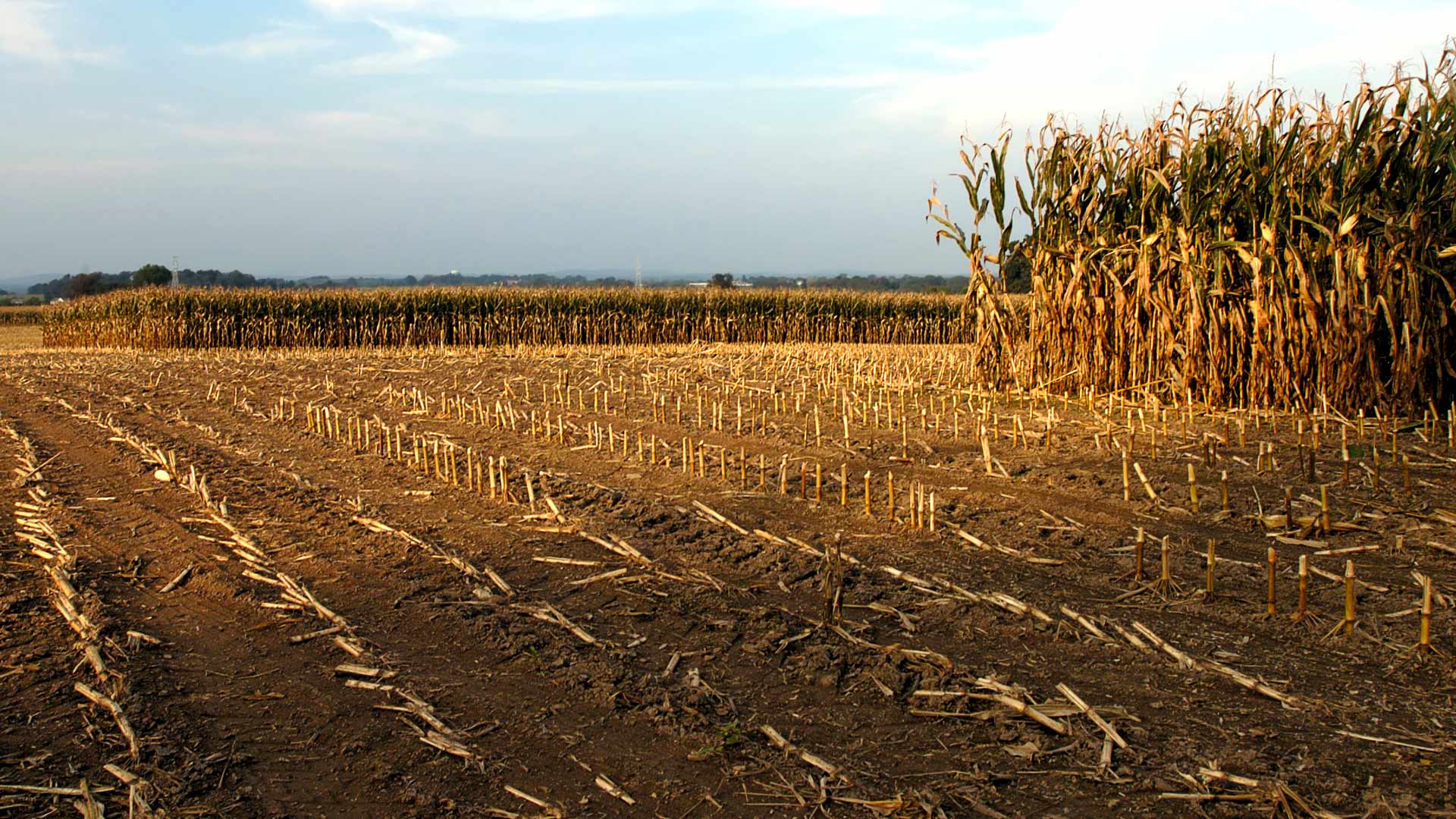>Listen to a radio spot on the Biomass Participation Survey
–by Liz Morrison
Minnesota farmers produce 33 million tons of corn residue a year.
But will they part with it? And if so, at what price?
These are two of the questions farmers were asked in a recent survey aimed at identifying places that could support new biomass processing businesses.
The survey shows that 40 percent of Minnesota growers might be willing to sell crop residue from their fields — if the price is high enough. Another 40 percent are on the fence about harvesting biomass, and two in 10 farmers wouldn’t consider it.
Growers’ overwhelming concern? The effects of biomass removal on soil quality, the survey found.
The study concludes that several regions of the state could supply enough corn residue to support large biomass processing facilities. However, securing a sustainable supply of corn stover will be more of a challenge than many have assumed, says survey director Joel Tallaksen, Ph.D., a renewable energy scientist at the University of Minnesota West Central Research and Outreach Center in Morris.
“Overall, the survey found many producers were undecided or not interested in selling agricultural biomass at this time.”
Knowledge and cost are key factors
Past surveys have mapped how much biomass farmers generate — but not how much they’d be willing to remove, says Alan Doering, AURI coproducts scientist. For biomass processors, the real question is, “What can you actually get your hands on? It can be a struggle, and we’ve seen that.”
In 2008, for example, the University of Minnesota in Morris approached local farmers to supply corn stover for the college’s new biomass gasification plant. Based on USDA and DOE estimates, “I was expecting an overwhelming amount of interest,” says Tallaksen. “We expected that many corn producers would be willing to supply corn stover at an average price of less than $50/ton.”
That assumption turned out to be overly optimistic. Few farmers attended informational meetings, and those who bid for contracts typically wanted $70 to $80/ton, delivered.
“It was a wake-up call,” says Tallaksen. “We needed a better understanding of farmers’ willingness to supply stover.”
That prompted a formal survey last summer to measure growers’ interest. The study was sponsored by AURI, the Minnesota Corn Research & Promotion Council and the University of Minnesota. (To read the full report, go to
auri.org/help/research.)
First solid data
The new study provides the first solid, statewide data on biomass availability, says Chuck DeGrote, a grain and livestock producer from Clara City, Minn. DeGrote serves on the Minnesota Corn Growers Association board of directors and provided feedback on the survey. “We wanted to get a feel for how growers would look at this.”
What really stands out, he says, “is how concerned growers are about the quality of their land, and preserving and improving it.”
The Minnesota Corn Growers are very interested in developing corn stover markets, which would offer farmers another commodity to sell, DeGrote says. Yet, producers are rightly wary of removing too much crop residue, he adds, so clear production and harvesting guidelines will be needed to help them protect the soil. The University of Minnesota and the USDA Agricultural Research Service are working on those problems now.
Given growers’ profit expectations and the current cost of biomass collection and delivery, the economics look better for higher-value biomass products, such as corn cobs, says Michael Sparby, AURI senior project strategist. Sparby noted that a previous study done in 2009 found that the corn cob has less value as a nutrient for the soil than the stocks and stovers but is still effective as biomass.
Best availability
A model created from the survey data shows that south central and southwest Minnesota are the best bets for furnishing large amounts of biomass — despite relatively little interest from the region’s farmers.
Southern Minnesota produces such big corn crops that collecting 500,000 tons of stover within a 70-mile radius of a large facility “could be accomplished, while maintaining soil quality and preventing erosion,” Tallaksen says, “as long as best soil management practices were used.”
That said, biomass developers will need to do a lot of groundwork to assure adequate feedstock supplies, Tallaksen says. “The supply chain plan is a very crucial step.”
The study will serve as a guideline supporting many of the agricultural biomass projects that AURI provides assistance to, says Doering. “This report can be used to help identify potential quantities of biomass that can be obtained as well as optimum locations in Minnesota to construct a biomass related plant.”
Percent of Responses
More than two-thirds said biomass harvesting would reduce soil organic matter,
The effects of biomass removal on soil quality mattered more
Nearly half of farmers said they would consider reducing tillage
Farmers in northwest Minnesota perceived fewer negative effects
40 percent of farmers said they were interested or very interested in selling corn stover for biomass projects.
21 percent were unwilling to sell
38 percent were undecided
A minimum net profit of $40 to $50/acre
Corn prices affect growers’ willingness to harvest stover
AURI and Partners
Idea to reality:
Agricultural biomass is an abundant renewable resource, but there was little hard data on how many Minnesota farmers would be willing to remove crop residues from their land.
AURI’s role:
AURI supported a statewide survey, which was carried out by the University of Minnesota West Central Research and Outreach Center and evaluated growers’ willingness to sell corn stover, asked for insights into their decision-making and identified where biomass supplies were most available.
Outcomes:
The survey will help ag biomass project developers understand supply chain issues and identify where they are most likely to find willing biomass suppliers.
Partners:
Minnesota Corn Research & Promotion Council, University of Minnesota West Central Research and Outreach Center, University of Minnesota Initiative for Renewable Energy and The Environment
Podcast: Play in new window | Download () | Embed
